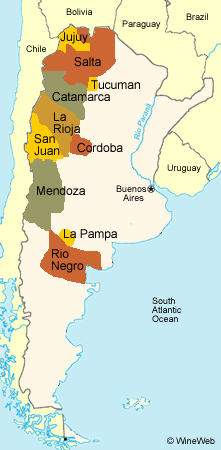The Argentine wine industry is the fifth largest producer of wine in the world. Argentine wine, as with some aspects of Argentine cuisine, has its roots in Spain. During the Spanish colonization of the Americas, vine cuttings were brought to Argentina and thus began the start of wine growing. Historically, Argentine winemakers were traditionally more interested in quantity than quality with the country consuming 90% of the wine it produces. The desire to increase exports fueled significant advances in quality. Argentine wines started being exported during the 1990s, and are currently growing in popularity, making it now the largest wine exporter in South America. The devaluation of the Argentine peso in 2002 further fueled the industry as production costs decreased and tourism significantly increased, giving way to a whole new concept of enotourism in Argentina.
The Mendoza province produces more than 60% of the Argentine wine and is the source of an even higher percentage of the total exports. Due to the high altitude and low humidity of the main wine producing regions, Argentine vineyards rarely face the problems of insects, fungi, molds and other grape diseases that affect vineyards in other countries. This allows cultivating with little or no pesticides, enabling even organic wines to be easily produced.





